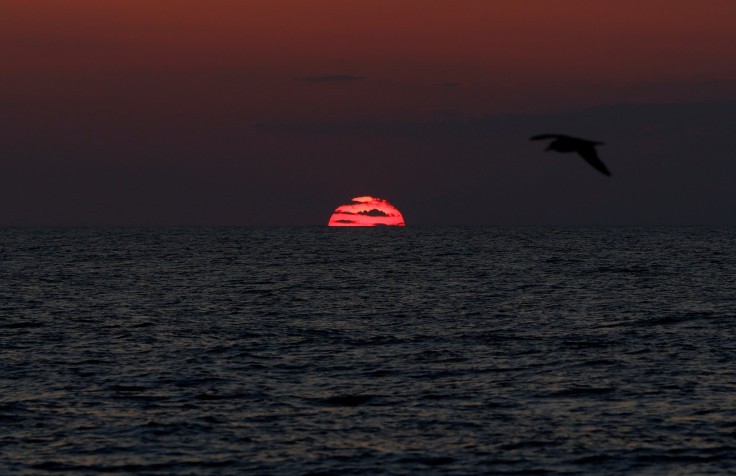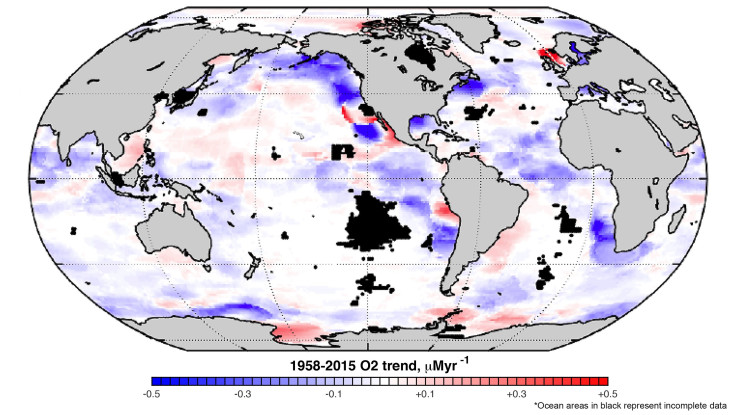Climate Change Is Causing The Dissolved Oxygen In World's Oceans To Plummet

The planet is warming, and so are its oceans. Between 1901 and 2015, as the oceans’ heat absorbing capacity was stretched to its limits, the average surface temperature of the world’s oceans of rose at an average rate of 0.13 degrees Fahrenheit per decade, and temperatures in the shallowest waters — where marine life thrives — rose by 0.18 degrees Fahrenheit per decade.
A new analysis of nearly five decades of data has now revealed how this inexorable rise in ocean temperatures has affected the oxygen dissolved in it. The analysis, published in the latest edition of Geophysical Research Letters, shows that dissolved oxygen levels started dropping in the 1980s as ocean temperatures began to climb.
Read: The Curious Case Of The Global Warming 'Hiatus'
Between then and now, the upper ocean “oxygen inventory” dropped at rate of 243 teramole per decade. This drop in dissolved oxygen, in turn, has led to a rise in hypoxic events in recent years, wherein low or depleted oxygen in oceans leads to the creation of “dead zones” that can no longer sustain populations of fish, corals, crabs and other marine organisms.

“The trend of oxygen falling is about two to three times faster than what we predicted from the decrease of solubility associated with the ocean warming,” lead researcher Takamitsu Ito, an associate professor at Georgia Institute of Technology’s school of Earth and atmospheric sciences, said in a statement released Wednesday. “This is most likely due to the changes in ocean circulation and mixing associated with the heating of the near-surface waters and melting of polar ice.”
Cold water holds can hold more dissolved gas than warmer water. So, as ocean surface temperatures rise, its oxygen dissolving capacity drops — that much is self-evident. However, what the researchers found in the study is that melting polar ice was disrupting ocean currents that are responsible for mixing highly oxygenated water with subsurface water. This, in turn, was making it even harder for oxygen to dissolve in the water.
“The oxygen in oceans has dynamic properties, and its concentration can change with natural climate variability,” Ito said. “The important aspect of our result is that the rate of global oxygen loss appears to be exceeding the level of nature's random variability.
This is not the first time scientists have raised concerns over the drop in concentration of oxygen in oceans and its impact on marine life. In February, in a study published in the journal Nature, a team of researchers revealed that global oceanic oxygen content had decreased by over two percent since 1960. The study also highlighted large variations in oxygen loss at different depths, and across different oceans, with North Pacific Ocean and the Arctic Ocean witnessing the largest drops in oxygen volume.
“The oxygen inventory predicted by climate model varies, but spans today’s observed levels,” the authors of the study wrote. “The observed global oxygen decline of nearly 1 Pmol per decade exceeds model estimates, which ranges from 0 to 600 Tmol per decade, but the observed inventory changes mirror expected patterns from anthropogenic warming.”
© Copyright IBTimes 2024. All rights reserved.












